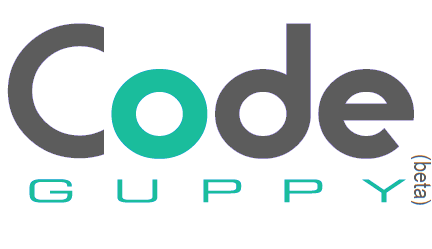8 Computer Science Algorithms You Can Implement in JavaScript
In the realm of computer science, algorithms play an important role in solving complex problems, optimizing processes, and enhancing the efficiency of computational tasks.
JavaScript, with its versatility and wide adoption, provides a fantastic platform for exploring and implementing these algorithms.
Whether you're a student, a hobbyist, or a professional developer, understanding and coding these algorithms can sharpen your problem-solving skills and deepen your comprehension of computer science concepts. Here are eight engaging algorithms that we implemented in JavaScript. Feel free to fork the projects and explore the code.
1. Flood Fill
The Flood Fill algorithm is used to determine the area connected to a given node in a multi-dimensional array. It's commonly used in paint programs for filling bounded areas with color and in game development for map analysis.
The algorithm works by recursively filling adjacent cells of a selected cell until it hits a boundary. Implementing Flood Fill in JavaScript is a great way to understand recursion and its applications in graphical operations.

2. Bresenham's Line Algorithm
Bresenham's Line Algorithm is a simple, efficient way to draw straight lines on a pixelated grid, such as a computer screen. Unlike other line-drawing algorithms that may require floating-point arithmetic, Bresenham's algorithm uses incremental error accumulation to decide the next pixel to draw, ensuring smooth lines with integer calculations. It's an excellent exercise in understanding how computer graphics work at a fundamental level.

3. Knight's Tour
The Knight's Tour is a classic chess problem. The goal is to move a knight on a chessboard in such a way that it visits every square exactly once. This problem can be approached as a graph traversal challenge, making it a perfect candidate for exploring backtracking algorithms in JavaScript. Implementing the Knight's Tour can help you grasp the concepts of backtracking and depth-first search.

CodeGuppy Knight's Tour Tutorial
4. Eight Queens
The Eight Queens puzzle asks how to place eight queens on an 8x8 chessboard so that no two queens threaten each other. This means placing the queens such that no two queens share the same row, column, or diagonal. Like the Knight's Tour, solving the Eight Queens puzzle in JavaScript is an excellent way to practice backtracking algorithms, offering insights into constraint satisfaction problems.

CodeGuppy Eight Queens Tutorial
5. Sudoku Solver
Sudoku is a popular puzzle that involves filling a 9x9 grid with digits so that each column, each row, and each of the nine 3x3 subgrids contain all the digits from 1 to 9. Writing a Sudoku solver in JavaScript challenges you to apply backtracking algorithms to a real-world problem, enhancing your understanding of how these algorithms can be adapted to various contexts.

6. Run-Length Encoding (RLE) Compression
RLE is a simple form of data compression in which sequences of the same data value are stored as a single data value and count. Implementing RLE in JavaScript is straightforward and provides a practical introduction to the concepts of data compression, string manipulation, and the trade-offs between space and time complexity in algorithm design.

7. Bubble Sort
Bubble Sort is a simple sorting algorithm that repeatedly steps through the list, compares adjacent elements, and swaps them if they are in the wrong order. While not the most efficient sorting method for large datasets, visualizing Bubble Sort in JavaScript, with an animation, offers a clear way to understand the basics of sorting algorithms, loops, and array manipulation.

CodeGuppy Visualizing Bubble Sort Tutorial
8. Perceptron
The Perceptron is a fundamental building block of neural networks, representing the simplest form of a feedforward neural network. Implementing a Perceptron in JavaScript allows you to dip your toes into the fascinating world of machine learning and artificial intelligence, covering concepts such as weights, bias, and learning rate.

Conclusion
These eight algorithms represent just a glimpse into the vast world of computer science and its applications.
By tackling these projects, you not only gain practical coding skills but also deepen your understanding of algorithmic thinking, problem-solving, and computational theory.
Whether for personal growth, academic purposes, or professional development, implementing these algorithms is a rewarding journey through the heart of computer science.
Read more blog articles Browse JavaScript projectsAbout codeguppy
CodeGuppy is a FREE coding platform for schools and independent learners. If you don't have yet an account with codeguppy.com, you can start by visiting the registration page and sign-up for a free account. Registered users can access tons of fun projects!

Follow @codeguppy on Twitter for coding tips and news about codeguppy platform. For more information, please feel free to contact us.
